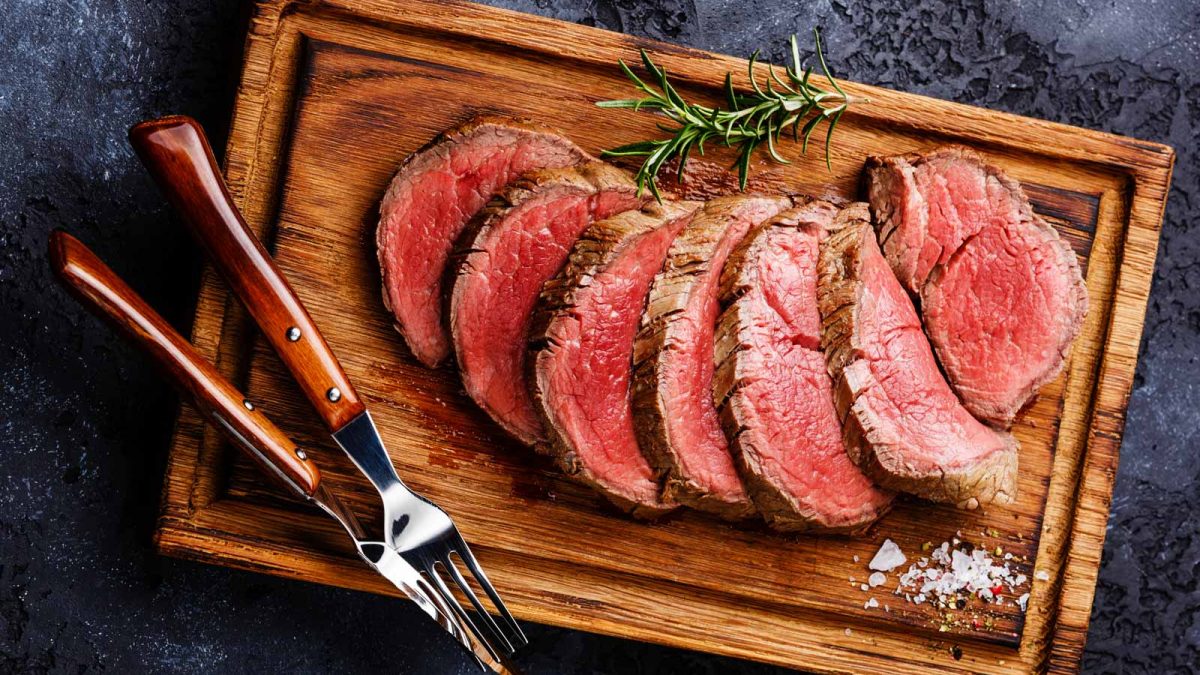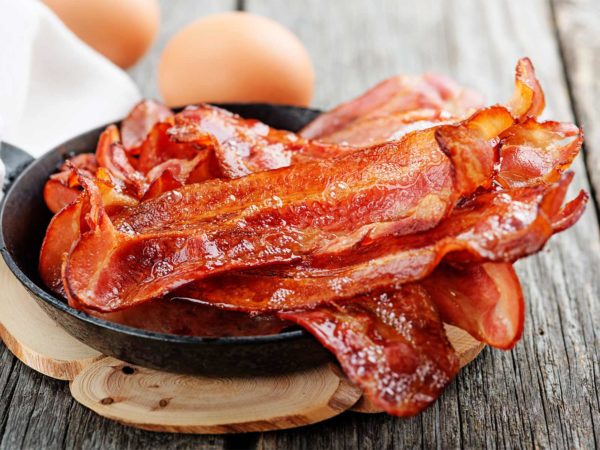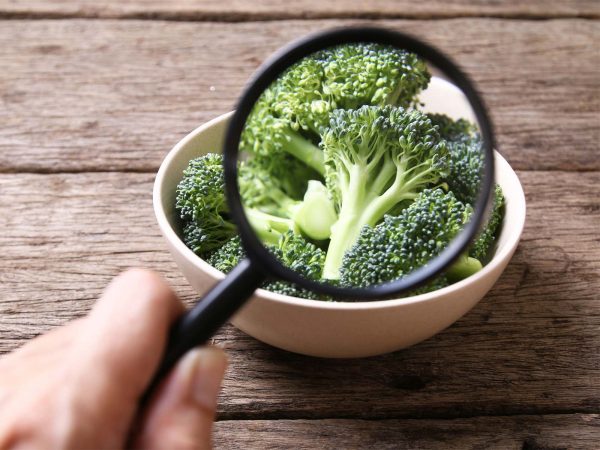Grass-Fed Beef
If you have picked up a newspaper or turned on the news recently, you might have read or heard the story that “red meat causes cancer.”
Just about every major health organization and the entire mainstream news media have broadcast headlines about a study of 500,000 people, published in the Archives of Internal Medicine.
The study concluded that eating “red meat” raises total mortality risk – including the risk of death from cancer and cardiovascular disease.
But before you toss out your steak knives and donate your grill, you should know that most population studies are rife with flaws.
And this one is no different. Consider three important facts about this widely published study condemning red meat:
- The researchers in this study failed to consider how the “red meat” was produced.
- The study lumps processed meats in the same category as “red meat”. But processed meats are known to contain potent carcinogenic compounds that have been linked to almost every form of cancer (not to mention heart disease and diabetes!)
- This study also fails to account for how the meat was prepared. Was it well-done, barbecued, fried or broiled? Or was it rare, slow-cooked, boiled or stewed?
All of these factors affect nutrient levels, fat ratios, sodium content and toxins in the meat… which in turn affects your health and disease risk. Today, we’re going to separate farm fact from fiction, disprove the bull that “all beef is created equal” and show you how you enjoy the healthiest red meat.
Feedlot Beef: It’s What’s for Dinner
Time Magazine reports that grass-fed beef constitutes only 1% of the beef supply in North America.
That means that whether you are eating a cheap fast food burger or an expensive filet mignon, the beef on your plate was – with 99% certainty – raised in squalid, jam-packed conditions and fattened on pesticide-ridden, genetically-modified corn in a factory feedlot.
Dr. Loren Cordain, PhD, author of The Paleo Diet and a professor in the Department of Health and Exercise Science at Colorado State University has done extensive research on the world of differences between grass-fed and grain-fed beef. Consider what happens to the meat when cows do not have the chance to eat grass, the diet they were designed for by Mother Nature :
- Higher in calories
- Higher in saturated fat
- Higher in inflammation-promoting omega-6 fats and lower in heart-healthy omega-3s
- Lower in a cancer-fighting, fat-blasting fat called conjugated linolenic acid (CLA)
- Lower in cancer-fighting vitamins including A and E
- Packed with growth hormones, pesticide residues and antibiotics
But the good news is that the grass is definitely greener on the pasture-fed side of the fence.
Grass-Fed Beef: Dining Where the Grass is Greener
According to research published in the Journal of Animal Science grass-fed beef is naturally leaner, lower in calories and packed with age-defying, cancer-fighting nutrients including:
- An optimal ratio of omega-6 to omega-3 fatty acids
- 200% – 400% more omega-3 than grain fed beef
- 400% more conjugated linolenic acid (CLA)
- 400% more vitamin A and E
- NO growth hormones, pesticide residues or regular antibiotic use
The types and ratios of fat and other nutrients in grass-fed beef is remarkably similar to wild ruminants (including elk, deer, buffalo, and antelope). These animals, along with fish, eggs, nuts and other foods we could gather, represented the primary fat and protein source for many thousands of years of human history.
Our genes have changed very little since the days of our Paleolithic ancestors. In fact, more than 99% of our genetic makeup is exactly the same. And yet, our diet has completely changed.
Dr. Cordain and many other health and nutrition experts believe that the shift to unnatural farming practices and processed foods is the primary cause of chronic disease. And here at Healing Gourmet, we agree.
You have heard the adage that, “you are what you eat.” This may be true. But when it comes to meat, you are what they ate. So, before you consume animal products, you should always consider the environment in which the animal was raised and the diet it consumed. If you always opt for pasture-raised, grass-fed beef, you’re sure to start out with a healthier piece of meat.
But there’s a lot more that can go wrong in the processing and preparation of meats…
Processed Meat: Beef with a Big Dose of Cancer-Causing Chemicals
A hundred years ago, “curing” was the tried-and-true technique for preserving meats. This method relied on nothing but salt and time.
Today’s conventional meat processors rely on sodium nitrite.
Sodium nitrites are the primary preservatives used in processed meats like hot dogs, cold cuts and bacon. And they can be deadly. In fact, just four grams of sodium nitrite is a lethal dose to a 130 pound person.
In the body, sodium nitrites are converted to highly carcinogenic N-nitroso compounds (nitrosamines). These potent cancer-causing chemicals speed up the formation and growth of cancer cells.
In fact, a study published in Mutation Research calls them “the most broadly acting and the most potent group of carcinogens”. But unfortunately, the health hazards of nitrites don’t end with cancer.
Nitrites also promote atherosclerosis (hardening of the arteries), high blood pressure and insulin resistance, increasing the risk for heart disease and diabetes.
Take a look at the research on meats processed with nitrites:
- Related to Most Forms of Cancer: A Canadian cancer research group evaluated nearly 20,000 people and found that consumption of processed meat was related to the risk of the stomach, colon, rectum, pancreas, lung, prostate, kidney and bladder cancer and leukemia
- Heart Disease & Diabetes: People who ate a 1.8 oz daily serving of processed meat (about 1-2 slices of deli meats or 1 hot dog) had a 42% higher risk of heart disease and a 19% higher risk for diabetes according to a Harvard study, published in Circulation. Eating unprocessed red meat was not associated with these risks.
- Colorectal Cancer: People who ate the most processed meat were 50% more likely to develop colon cancer (JAMA).
- Stomach Cancer: An investigation of 15 studies on processed meat found that the risk of stomach cancer increased from 15% – 38% for every additional ounce consumed.
- Childhood Leukemia: A 2009 study conducted at Harvard found that eating cured or smoked meats or fish more than once a week increased the risk for childhood leukemia by 200%.
- Pancreatic Cancer: In a study published by the National Cancer Institute, people who ate the most processed meats had a 68% higher risk of pancreatic cancer compared to those who ate the least.
- Brain Tumors in Children: Children born to women who ate a lot of cured meats during pregnancy had a 200-300% increased risk of developing a brain tumor than those born to mothers who did not consume cured meats, according to a study published in Public Health Nutrition.
Years of research have clearly shown that sodium nitrites are potent carcinogens and raise the risk of heart disease and diabetes. You should avoid these chemical preservatives at all costs.
Fortunately, that does not mean you have to ban the bacon, slash the sausage or ditch the deli meats. You just need to become a wise consumer and look for the natural brands that do not use these harmful preservatives.
And that’s where Healing Gourmet can help you. We have reviewed thousands of brand name foods (including hundreds of specialty brands you may have never heard of) to identify those that are healthy and not harmful. We publish these foods and suppliers in our Healthy Packaged Foods Database, including companies like Applegate Farms and U.S. Wellness Meats, who produce nitrite free meat products.
There’s one final factor to look at when it comes to beef and your health: How you cook it!
Four Simple Rules for Cooking Sumptuous, Healthy Grass-Fed Beef
If you like your steak char-grilled or well done, I have some unappetizing news: You’re being exposed to dangerous cancer-causing compounds.
These compounds are called heterocyclic amines (HCAs) and they are formed when muscle meats are exposed to high temperatures.
HCAs can increase the risk for several types of cancer – including stomach cancer, colon cancer, breast cancer and pancreatic cancer. These just happen to be the cancers that were so prevalent in the study which claimed that “red meat” is responsible for causing cancer.
Here are four rules for cooking sumptuous, healthy meat:
- Cooking Rule #1: Avoid “Well-Done” Meat! A National Cancer Institute study found that people who ate their beef medium-well or well-done had more than three times the risk of stomach cancer than those who choose rare or medium rare.
- Cooking Rule #2: Cook Your Meats Slow & Low! Because HCAs form at high temperatures, using lower temperature cooking methods is important. In fact, cooking at or below 212 F (think poaching, slow cooking, stewing or boiling) produces negligible amounts of HCAs. New generation convection ovens (like Flavorwave or NuWave) are a great choice for making juicy and delicious steaks without grilling and charring the meat..
- Cooking Rule #3: Keep Your Meat Moist! As moisture in the meat decreases, HCA formation goes up. Dried out, overcooked, leathery meat doesn’t just taste bad, it can be dangerous to your health. Keep moisture in by cooking your meat with liquids (think sauces, broths and wine) at lower temperatures. Use your slow cooker or Dutch oven to make melt-in-your-mouth meat dishes that are HCA-free.
- Cooking Rule #4: Marinate with Antioxidant Herbs and Spices! Another way to reduce HCAs (and add great flavor) to your grass-fed meat is to marinate. A study published in Journal of Food Science found that a marinade containing rosemary reduced the formation of HCAs by 92%. While rosemary is particularly potent against HCAs, most herbs and spices provide protection thanks to their antioxidant content.
All Beef is NOT Created Equal
After reading a study that “beef causes cancer”, some people will swear off red meat altogether. But that would be a decision based on the incorrect belief that “all beef is created equal”. Clearly, this is not true:
- Less than 1% of the beef we eat in the U.S. is raised the way nature intended – on pasture.
- Conventional feedlot beef is produced on pesticide-ridden grain, and administered antibiotics and hormones that packs your steak with toxins and chemicals.
- Grain-fed beef contains ZERO conjugated linolenic acid (CLA) – the healthy fat known for its cancer-fighting and fat-blasting activity.
- Grain-fed beef is high in omega-6 fats – fats that promote inflammation, damage cholesterol, promote heart disease and cancer and encourage weight gain.
- Processed meats contain nitrites – cancer-causing chemicals that also promote heart disease and diabetes.
- Cooking meat at high temperatures – including America’s favorite methods of grilling and barbecuing – causes carcinogenic compounds to form.
There can be risks associated with any food we eat. But in every case, those risks can be reduced or eliminated by considering the source, the environment and the preparation of your food. So go ahead and enjoy a moist and juicy steak. Just be sure it’s grass-fed, marinated and cooked slow and low for the best flavor and health benefits.




Does the use of celery powder in bacon and other meats have the same effect as sodium nitrate and nitrite?
Does slow cooking a lamb shoulder bone-in roast overnight for stock cause HCA formation in the stock? Since lamb takes 30% less time to cook than beef, the cooked meat is dry but very flavorful. I now have breast cancer so I throw out the meat but keep the jelled broth and have a cup every day. I used to make wonderful chili with the meat.